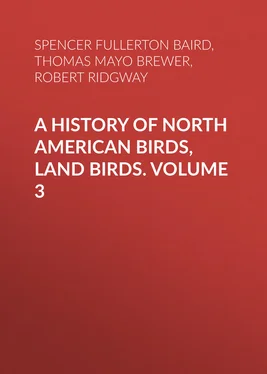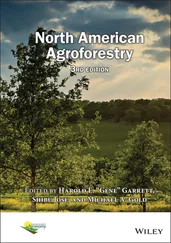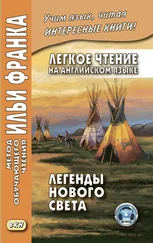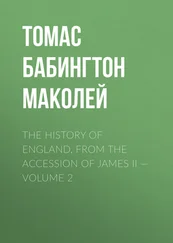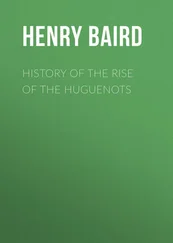Spencer Fullerton Baird - A History of North American Birds, Land Birds. Volume 3
Здесь есть возможность читать онлайн «Spencer Fullerton Baird - A History of North American Birds, Land Birds. Volume 3» — ознакомительный отрывок электронной книги совершенно бесплатно, а после прочтения отрывка купить полную версию. В некоторых случаях можно слушать аудио, скачать через торрент в формате fb2 и присутствует краткое содержание. Жанр: foreign_antique, Биология, foreign_edu, на английском языке. Описание произведения, (предисловие) а так же отзывы посетителей доступны на портале библиотеки ЛибКат.
- Название:A History of North American Birds, Land Birds. Volume 3
- Автор:
- Жанр:
- Год:неизвестен
- ISBN:нет данных
- Рейтинг книги:5 / 5. Голосов: 1
-
Избранное:Добавить в избранное
- Отзывы:
-
Ваша оценка:
- 100
- 1
- 2
- 3
- 4
- 5
A History of North American Birds, Land Birds. Volume 3: краткое содержание, описание и аннотация
Предлагаем к чтению аннотацию, описание, краткое содержание или предисловие (зависит от того, что написал сам автор книги «A History of North American Birds, Land Birds. Volume 3»). Если вы не нашли необходимую информацию о книге — напишите в комментариях, мы постараемся отыскать её.
A History of North American Birds, Land Birds. Volume 3 — читать онлайн ознакомительный отрывок
Ниже представлен текст книги, разбитый по страницам. Система сохранения места последней прочитанной страницы, позволяет с удобством читать онлайн бесплатно книгу «A History of North American Birds, Land Birds. Volume 3», без необходимости каждый раз заново искать на чём Вы остановились. Поставьте закладку, и сможете в любой момент перейти на страницу, на которой закончили чтение.
Интервал:
Закладка:
Spencer Fullerton Baird, Thomas Mayo Brewer, Robert Ridgway
A History of North American Birds; Land Birds; Vol. 3 of 3
RAPTORES. 1 1 The whole of the systematic portion of the article on the Raptores , has been prepared by Mr. Ridgway; the biographies, however, are furnished by Dr. Brewer, as usual. The outlines of the skulls and sterna of the Strigidæ , the skulls, sterna, and heads of the Cathartidæ , and the generic outlines of the Falconidæ and Cathartidæ , were drawn by Mr. Ridgway.—S. F. Baird.
—The Birds of Prey
The group of birds usually known as the Raptores , or Rapacious Birds, embraces three well-marked divisions, namely, the Owls, the Hawks, and the Vultures. In former classifications they headed the Class of Birds, being honored with this position in consequence of their powerful organization, large size, and predatory habits. But it being now known that in structure they are less perfectly organized than the Passeres and Strisores , birds generally far more delicate in organization, as well as smaller in size, they occupy a place in the more recent arrangements nearly at the end of the Terrestrial forms.
The complete definition of the order Raptores , and of its subdivisions, requires the enumeration of a great many characters; and that their distinguishing features may be more easily recognized by the student, I give first a brief diagnosis, including their simplest characters, to be followed by a more detailed account hereafter.
Common Characters. Bill hooked, the upper mandible furnished at the base with a soft skin, or “cere,” in which the nostrils are situated. Toes, three before and one behind. Raptores.
Strigidæ.Eyes directed forwards, and surrounded by radiating feathers, which are bounded, except anteriorly, by a circle or rim of differently formed, stiffer feathers. Outer toe reversible. Claws much hooked and very sharp. Legs and toes usually feathered, or, at least, coated with bristles. The Owls.
Falconidæ.Eyes lateral, and not surrounded by radiating feathers. Outer toe not reversible (except in Pandion ). Claws usually hooked and sharp, but variable. Head more or less completely feathered. The Hawks.
Cathartidæ.Eyes lateral; whole head naked. Outer toe not reversible; claws slightly curved, blunt. The Vultures.
The preceding characters, though purely artificial, may nevertheless serve to distinguish the three families of Raptores belonging to the North American Ornis ; a more scientific diagnosis, embracing a sufficient number of osteological, and accompanying anatomical characters, will be found further on.
The birds of prey—named Accipitres by some authors, and Raptores or Rapaces by others, and very appropriately designated as the Ætomorphæ by Professor Huxley—form one of the most strongly characterized and sharply limited of the higher divisions of the Class of Birds. It is only recently, however, that their place in a systematic classification and the proper number and relation of their subdivisions have been properly understood. Professor Huxley’s views will probably form the basis for a permanent classification, as they certainly point the way to one eminently natural. In his important paper entitled “On the Classification of Birds, and on the Taxonomic Value of the Modifications of certain Cranial Bones observable in that Class,” 2 2 By Thomas H. Huxley, F. R. S., V. P. Z. S.; Proceedings of the Zoölogical Society of London, 1867, pp. 415–473.
this gentleman has dealt concisely upon the affinities of the order Raptores , and the distinguishing features of its subdivisions. In the following diagnoses the osteological characters are mainly borrowed from Professor Huxley’s work referred to. Nitzsch’s “Pterylography” 3 3 By Charles Ludwig Nitzsch. English edition, translated from the German by Dr. Philip Lutley Sclater, and published by the Ray Society of London, 1867.
supplies such characters as are afforded by the plumage, most of which confirm the arrangement based upon the osteological structure; while important suggestions have been derived from McGillivray’s “History of British Birds.” 4 4 By William McGillivray, A. M.; London, 1840.
The Monographs of the Strigidæ and Falconidæ , by Dr. J. J. Kaup, 5 5 See Jardine’s Contributions to Ornithology, London, 1849, p. 68; 1850, p. 51; 1851, p. 119; 1852, p. 103; and Transactions of the Zoölogical Society of London, 1862, p. 201.
contain much valuable information, and were they not disfigured by a very eccentric system of arrangement they would approach nearer to a natural classification of the subfamilies, genera, and subgenera, than any arrangement of the lesser groups which I have yet seen.
The species of this group are spread over the whole world, tropical regions having the greatest variety of forms and number of species. The Strigidæ are cosmopolitan, most of the genera belonging to both continents. The Falconidæ are also found the world over, but each continent has subfamilies peculiar to it. The Cathartidæ are peculiar to America, having analogous representatives in the Old World in the subfamily Vulturinæ belonging to the Falconidæ , The Gypogeranidæ are found only in South Africa, where a single species, Gypogeranus serpentarius (Gmel.), sole representative of the family, is found.
As regards the comparative number of species of this order in the two continents, the Old World is considerably ahead of the New World, which might be expected from its far greater land area. 581 species are given in Gray’s Hand List, 6 6 Hand List of Genera and Species of Birds, distinguishing those contained in the British Museum. By George Robert Gray, F. R. S., etc. Part I. Accipitres , Fisserostres , Tenuirostres , and Dentirostres . London, 1869.
of which certainly not more than 500, probably not more than 450, are valid species, the others ranking as geographical races, or are synonymous with others; of this number about 350 nominal species are accredited to the Old World. America, however, possesses the greatest variety of forms, and the great bulk of the Old World Raptorial fauna is made up chiefly by a large array of species of a few genera which are represented in America by but one or two, or at most half a dozen, species. The genera Aquila , Spizætus , Accipiter , Haliætus , Falco , Circus , Athene , Strix , and Buteo , are striking examples. As regards the number of peculiar forms, America is considerably ahead.
Family STRIGIDÆ.—The Owls
Char. Eyes directed forward, and surrounded by a radiating system of feathers, which is bounded, except anteriorly, by a ruff of stiff, compactly webbed, differently formed, and somewhat recurved feathers; loral feathers antrorse, long, and dense. Plumage very soft and lax, of a fine downy texture, the feathers destitute of an after-shaft. Oil-gland without the usual circlet of feathers. Outer webs of the quills with the points of the fibres recurved. Feathers on the sides of the forehead frequently elongated into ear-like tufts; tarsus usually, and toes frequently, densely feathered. Ear-opening very large, sometimes covered by a lappet. Œsophagus destitute of a dilated crop; cœca large. Maxillo-palatines thick and spongy, and encroaching upon the intervening valley; basipterygoid processes always present. Outer toe reversible; posterior toe only about half as long as the outer. Posterior margin of the sternum doubly indented; clavicle weak and nearly cylindrical, about equal in length to the sternum. Anterior process of the coracoid projected forward so as to meet the clavicle, beneath the basal process of the scapula. Eggs variable in shape, usually nearly spherical, always immaculate, pure white.
Читать дальшеИнтервал:
Закладка:
Похожие книги на «A History of North American Birds, Land Birds. Volume 3»
Представляем Вашему вниманию похожие книги на «A History of North American Birds, Land Birds. Volume 3» списком для выбора. Мы отобрали схожую по названию и смыслу литературу в надежде предоставить читателям больше вариантов отыскать новые, интересные, ещё непрочитанные произведения.
Обсуждение, отзывы о книге «A History of North American Birds, Land Birds. Volume 3» и просто собственные мнения читателей. Оставьте ваши комментарии, напишите, что Вы думаете о произведении, его смысле или главных героях. Укажите что конкретно понравилось, а что нет, и почему Вы так считаете.
